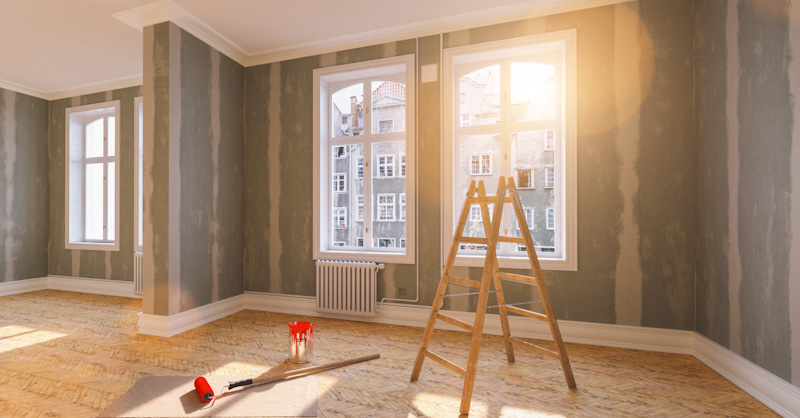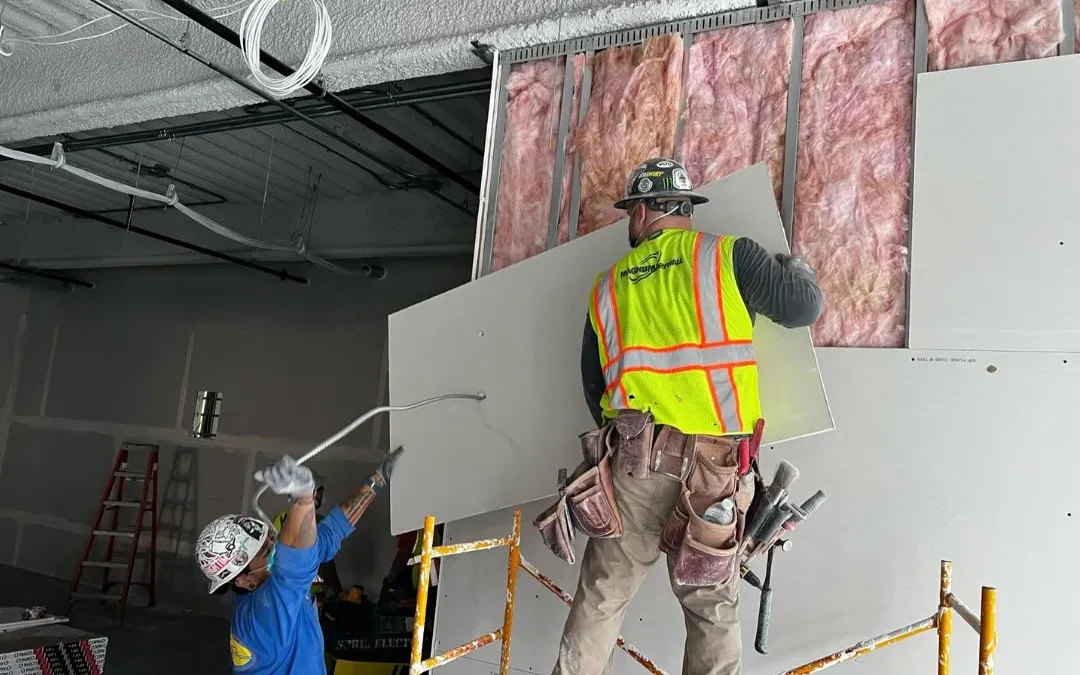Reliable Drywall Repair Techniques to Restore Your Wall surfaces
Reliable Drywall Repair Techniques to Restore Your Wall surfaces
Blog Article
Drywall Setup Made Easy: Tips for Perfect Results
Drywall installation is typically viewed as a challenging task, yet with the best technique and knowledge, it can come to be a convenient venture. Choosing top quality materials and preparing the installation area are essential primary steps that set the foundation for success. Grasping techniques for cutting, hanging, and completing drywall can significantly impact the outcome. As we discover these vital pointers, you may discover that even the tiniest adjustments in your approach can lead to incredibly improved outcomes, leaving you to think about just how these methods can change your following task.
Selecting the Right Products
Selecting the proper materials for drywall installment is essential to attaining a durable and visually pleasing coating. sheetrock repair fort worth. The primary component, drywall sheets, normally come in various densities, with 1/2-inch sheets being typical for interior walls. For locations requiring extra dampness resistance, such as bathrooms or kitchens, take into consideration making use of eco-friendly board or cement board, which are specially designed to hold up against humidity

In addition, picking the appropriate bolts-- either nails or screws-- is necessary for safeguarding the drywall to the framework. Drywall screws are typically favored for their holding power and reduced risk of standing out. Last but not least, take into consideration the complements such as primer and paint, which not only boost the look however also protect the drywall from dampness and wear.
Preparing the Installment Area
Before starting the drywall installation procedure, it is important to prepare the installment area completely. A clean office decreases the danger of damages to existing items and enables for reliable movement during installment.
Next, evaluate the wall surfaces and ceiling for any kind of flaws, such as fractures, openings, or mold and mildew. Address these concerns in advance; patch any type of damages and enable enough time for repair work to completely dry. Furthermore, make sure that electric outlets, switches, and pipes are properly positioned and represented, as this will certainly impact drywall placement.
Take into consideration the ecological problems. A secure temperature level and moisture degree are essential for optimum adhesion and performance of the drywall materials. Make use of a dehumidifier or heating system to develop appropriate conditions. if required.
Cutting and Hanging Drywall
The trick to effective drywall installation lies in the specific cutting and dangling of the panels. Use a straight side and an utility knife to rack up the drywall along your measurements, after that break it along the scored her comment is here line for a tidy break.

Constantly work from the top down and delegated right, ensuring that you preserve a staggered pattern to boost stability. Appropriately hanging the drywall sets the foundation for a smooth coating, ultimately causing exceptional lead to your drywall project.
Taping and Mudding Methods
While correct cutting and hanging of drywall sets the phase, the next critical step includes understanding taping and mudding strategies to guarantee a seamless coating. Insulation is essential for strengthening joints and protecting against cracks; it involves embedding tape right into the used joint substance (mud) Beginning with a quality fiberglass or paper tape, using the tape over the joint and pushing it into the wet mud using a taping knife, making sure no air bubbles continue to be.
As soon as the tape remains in place, apply a thin layer of joint compound over the tape, feathering the edges to produce a smooth shift to the drywall surface area. Enable this layer to completely dry entirely prior to sanding it gently to get rid of blemishes. Repeat this procedure, using added layers of mud as necessary-- usually two to three coats-- while progressively broadening the application area with each layer to achieve a seamless look.
After the final layer dries, sand the surface with a fine-grit sandpaper until smooth. drywall repair. Keep in mind to put on a mask throughout sanding to stay clear of breathing in dirt bits. Grasping these taping and mudding strategies is crucial for attaining a professional-quality coating in your drywall installment
Ending Up Touches for Excellence
Accomplishing a flawless drywall installment goes past mudding and taping; it finishes in the ending up touches that elevate the total look. These last actions are crucial in making certain a professional-grade surface that boosts the visual appeals of your room.
Begin by sanding the dried joint compound to produce a smooth surface. Utilize a fine-grit sandpaper and a fining sand block or pole sander for ideal control. Pay particular attention to sides and corners, as these areas have a tendency to call for more careful job. After check my source sanding, clean down the walls with a wet fabric to remove any dirt particles, guaranteeing a clean surface for painting.
Next, use a primer specifically designed for drywall. This action is essential, as it aids seal the joint compound and gives a consistent base for the overcoat. As soon as the guide dries, inspect for any type of imperfections, and repair as required.
Conclusion
To conclude, effective drywall setup depends upon the mindful selection of materials, detailed preparation of the installation area, and specific implementation of cutting and hanging techniques. Proficiency of taping and mudding processes is important for attaining a smooth surface. Furthermore, attention to completing touches, including priming and touch-ups, makes sure a professional-grade result. By adhering to these guidelines, the top quality of workmanship can be dramatically improved, adding to the total visual and performance of the area.
Drywall setup is check this site out typically regarded as an overwhelming task, yet with the best technique and knowledge, it can become a convenient endeavor.Choosing the appropriate products for drywall installation is crucial to accomplishing a durable and cosmetically pleasing finish.Prior to beginning the drywall installment procedure, it is essential to prepare the setup area completely. Mastering these taping and mudding methods is important for attaining a professional-quality finish in your drywall installation.
In verdict, successful drywall setup pivots on the cautious option of products, detailed prep work of the installment location, and specific implementation of reducing and hanging methods.
Report this page